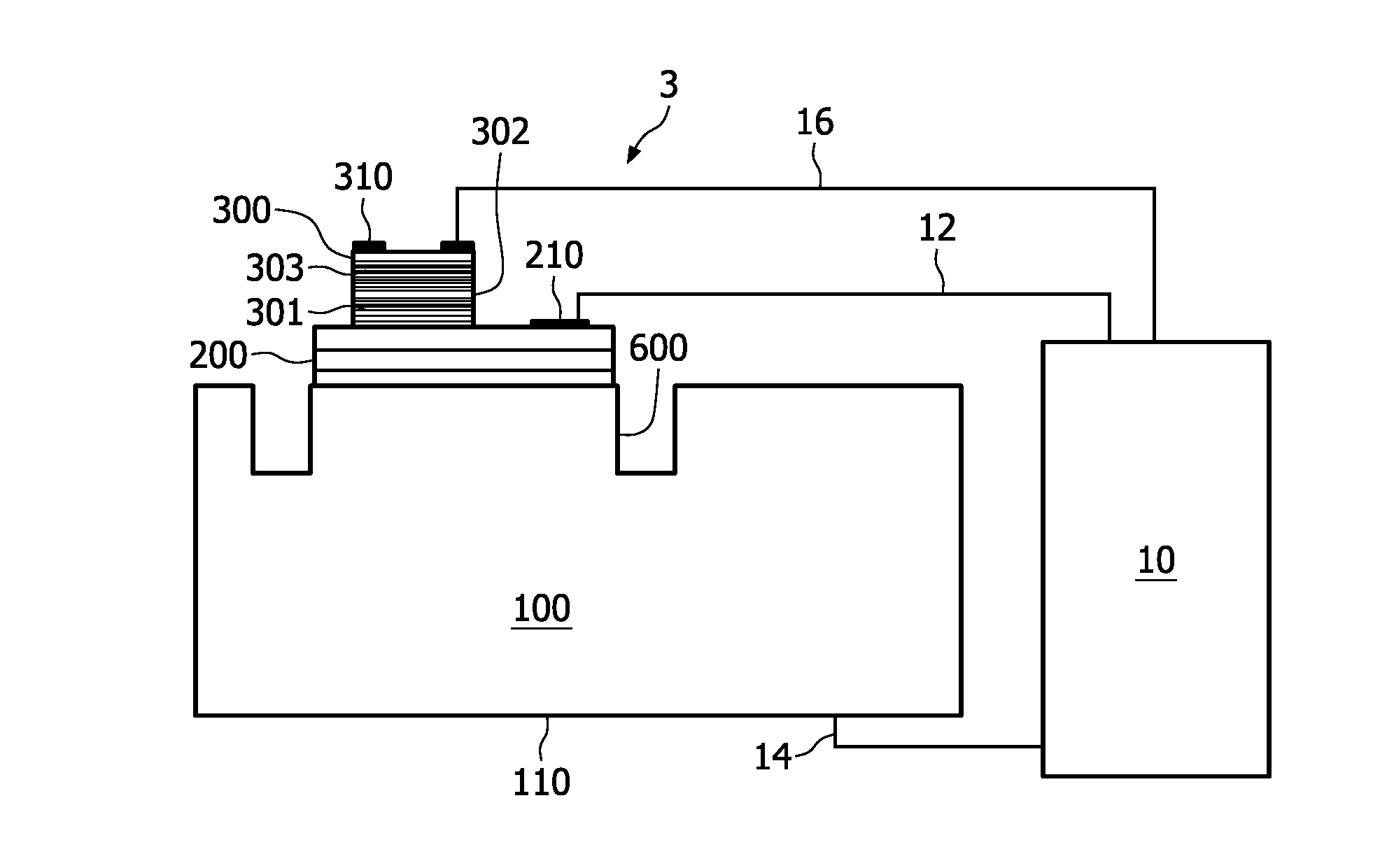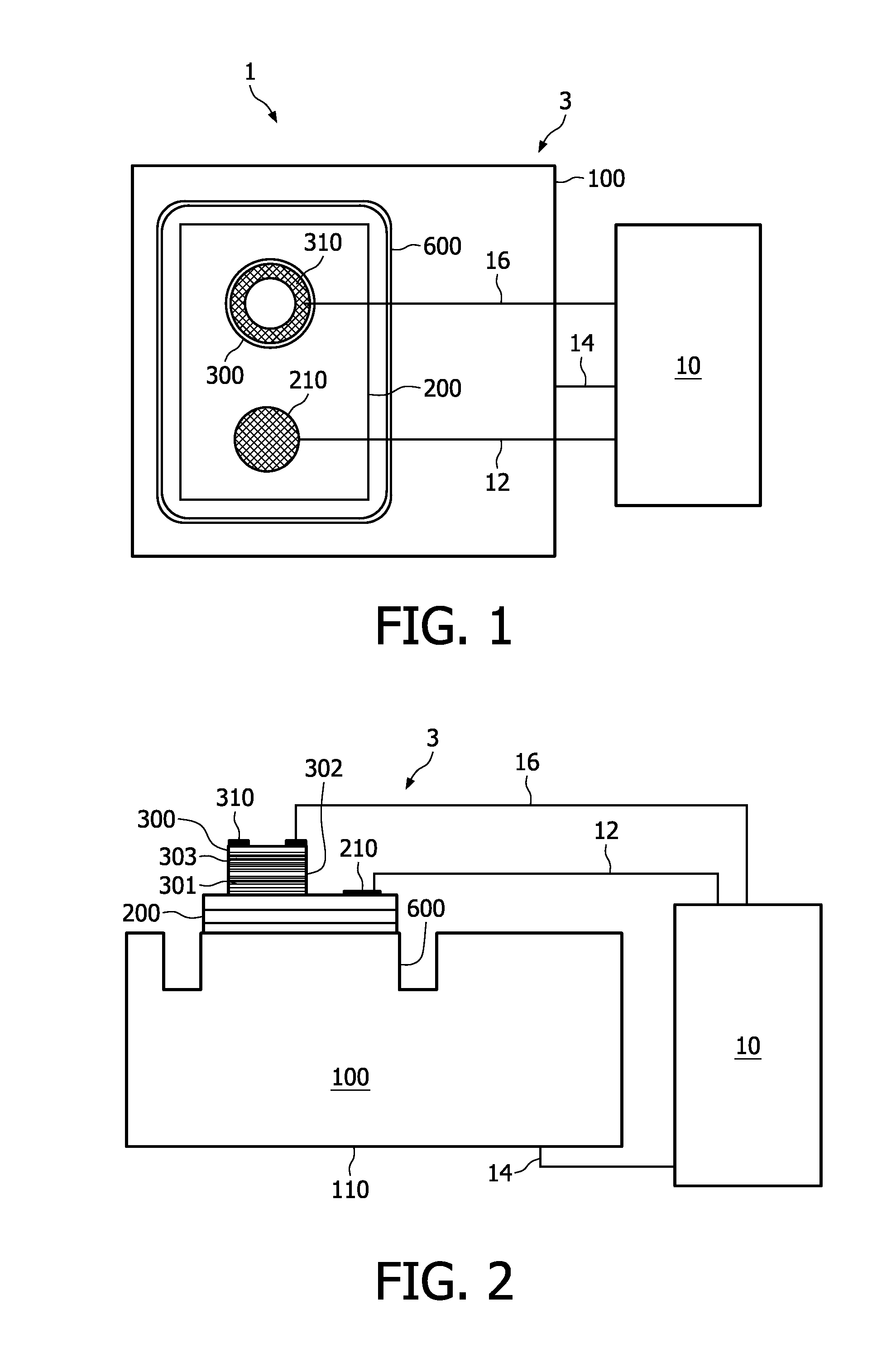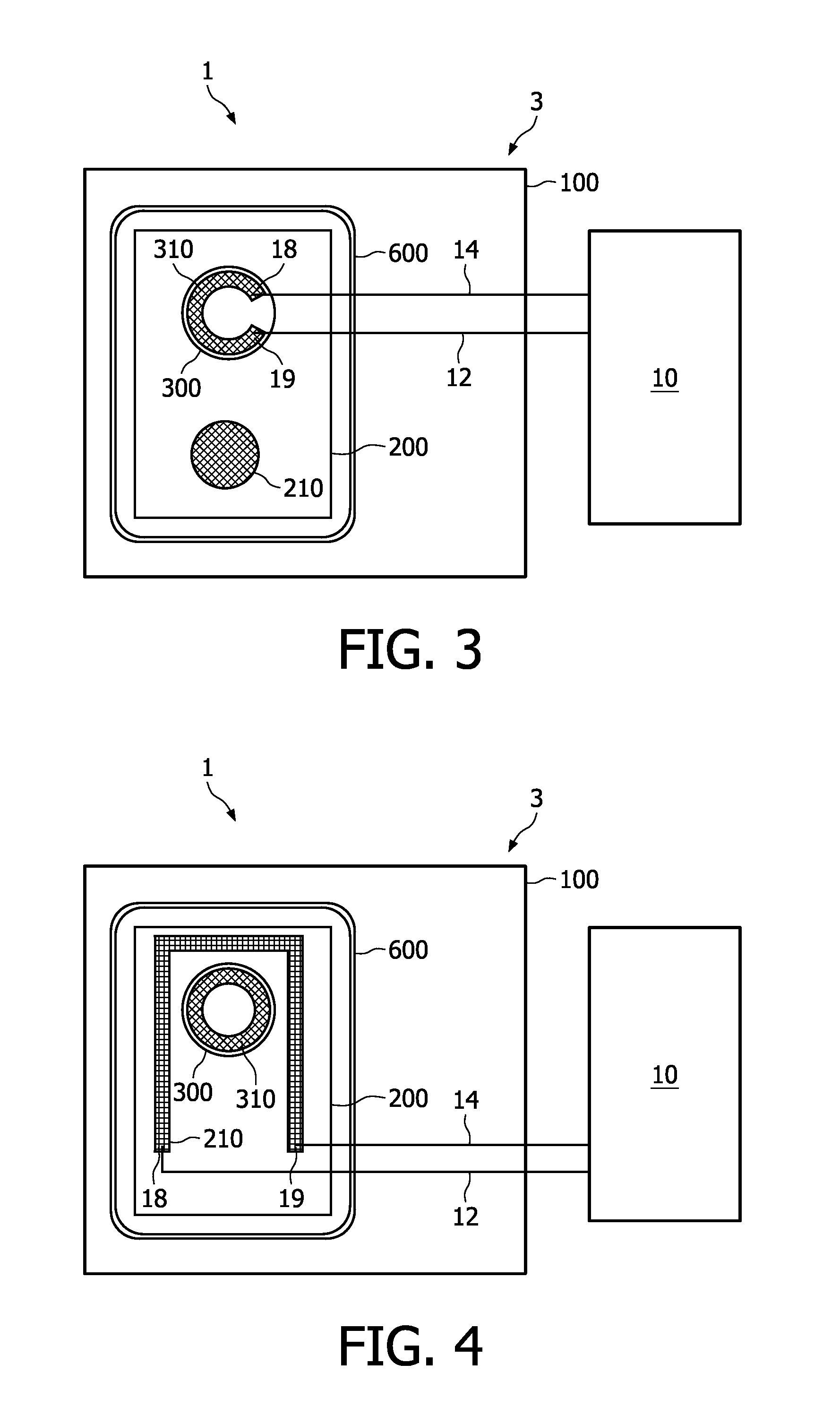Wavelength-controlled semiconductor laser device
a laser device and wavelength control technology, applied in the direction of laser output parameters control, laser details, semiconductor lasers, etc., can solve the problems of 1% systematic error in distance and velocity measurement, affecting the efficiency of laser operation, and requiring additional components for heat dissipation, etc., to achieve stable operation and long life
- Summary
- Abstract
- Description
- Claims
- Application Information
AI Technical Summary
Benefits of technology
Problems solved by technology
Method used
Image
Examples
Embodiment Construction
[0042]FIGS. 1 and 2 are a schematic top view and a side view, respectively, of a semiconductor laser device 1.
[0043]The semiconductor laser device 1 comprises a laser diode device 3 with a VCSEL 300 and an integrated photodiode 200 and electric contacts 110, 210, 310 for electrically connecting the VCSEL 300 and the integrated photodiode 200. The VCSEL 300 comprises two Bragg reflector stacks 301, 303 with an intermediate stack 302 of, e.g. three quantum wells. The layers of the VCSEL and the photodiode are deposited on a substrate 100. A typical substrate material for a VCSEL is GaAs.
[0044]The semiconductor laser device 1 further comprises feedback control circuitry 10 for setting or stabilizing the laser wavelength by stabilizing or setting the temperature of the laser diode device 3. The feedback control circuitry 10 is set up to generate a heating voltage or current in response to a temperature-dependent parameter detected by the feedback control circuitry 10. This heating volta...
PUM
 Login to View More
Login to View More Abstract
Description
Claims
Application Information
 Login to View More
Login to View More - R&D
- Intellectual Property
- Life Sciences
- Materials
- Tech Scout
- Unparalleled Data Quality
- Higher Quality Content
- 60% Fewer Hallucinations
Browse by: Latest US Patents, China's latest patents, Technical Efficacy Thesaurus, Application Domain, Technology Topic, Popular Technical Reports.
© 2025 PatSnap. All rights reserved.Legal|Privacy policy|Modern Slavery Act Transparency Statement|Sitemap|About US| Contact US: help@patsnap.com



